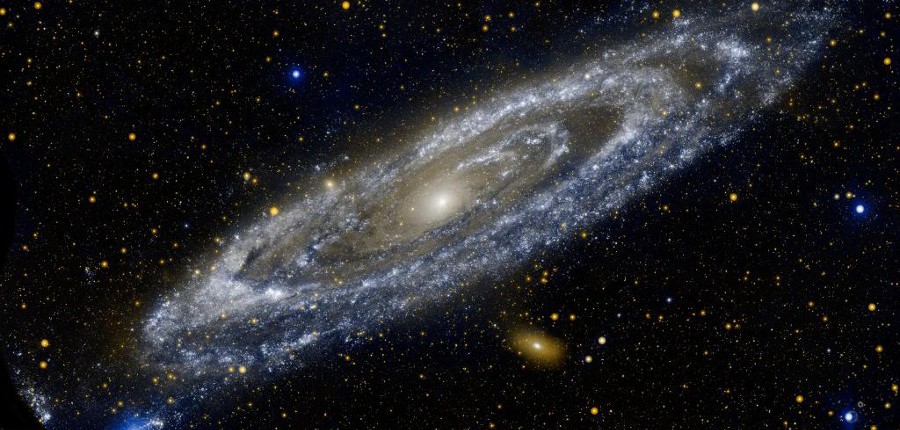There seems to be a recent urge in the theoretical physics community to explicate the scientific meaning of the concept of nothingness. It appears from some recent attempts, A Universe From Nothing (Lawrence Krauss), and Void: The Strange Physics of Nothing (James Owen Weatherall), that theoretical physicists are in the process of trying to explicate nothingness both to themselves and a general audience.
These amusing attempts to wrestle the abstract and scientifically baseless concept of nothingness into a rational model of physical reality produce some interesting logical contortions. The primary approach of both authors is to assert that scientists have a special definition of the term nothingness in which nothingness is said to ultimately contain something, negative vacuum energy or electromagnetic energy or virtual particles or… something.
The problem of course, having defined nothingness out of existence by simply declaring it to be composed of something, theorists then feel compelled to explain how the somethings that compose nothingness can be derived from the nothingness that doesn’t exist.
All indications are that, in fact, the whole universe has a steady, low level of electromagnetic radiation pulsing through it, known as the Cosmic Microwave Background.
(………..)
Still, we might wonder whether, even if our universe does have an electromagnetic field filling all of space and time, it is at least possible to have a universe with no electromagnetic field—or even a region of space and time with no electromagnetic field.
(………….)
Now suppose there is some region of space-time where the field strength is zero. This means, for instance, that there is no electromagnetic radiation in the region—no light, no X-rays, and so on. But does it mean that there is no electromagnetic field at all? On one way of thinking, the answer is certainly “yes.” If the field strength is zero, there would be no detectable electromagnetic effects. The “amount” of field present would be zero, which is just another way of saying there is no field present.
(………..)
But there’s another possibility. One might think that the electromagnetic field fills all of space, but that it may be configured in different ways, depending, for instance, on the distribution of charges in the universe and other factors. The field strength is just a way of describing how the field is configured. And one possible configuration—no different, in principle, from any other—is the one in which the field strength is zero everywhere in some region. On this way of thinking, saying the field strength is zero is just the same as saying the field isn’t doing anything—but not the same as saying there is no field at all.
—– James Owen Weatherall, Void: The Strange Physics of Nothing
These four passages are presented as a logical, scientific argument or something of the sort but in fact they are nothing of the sort. The first, being the only factual statement, is simply invoked so that it can be subsequently dismissed from consideration.
The other three statements are entirely speculative and concern a condition that is not observed in the cosmos. It is a condition that exists only in the imagination of those theoretical physicists who choose to idle away their hours in make-believe realms. So what if the cosmos is permeated with electromagnetic energy? Empirical reality is far less interesting to theorists than the boundless realm of their unfettered mathematical imaginations.
Weatherall leaps from the fact that the cosmos is permeated by electromagnetic radiation (EMR) directly to the “wonder” of contemplating a “universe” or “region of space and time” absent any EMR. The scientific value of this is hard to see. One might as well contemplate the number of angels that can copulate on a Higgs boson.
Nevertheless, pressing on we learn that there are two possibilities concerning this newly imagined nothingness. The first is that, it is in fact nothing because the electromagnetic field is not detectable and therefore not present. The second possibility is that nothingness is actually a state of the electromagnetic field and therefore is really something, though not a detectable something. To some this may seem a distinction without a difference, but to the theoretician this loop-de-loop logic has great ontological significance. It’s a doctorate level variation on the chicken and egg question.
Weatherall’s preferred possibility is the second and he avers that support for the view that nothing is really something can be found in Quantum Field Theory (QFT), wherein the constant eruption and annihilation of imaginary, undetectable ‘virtual particles’ constitutes the fabric of nothingness. Well maybe…but then again maybe not. Two virtual realities do not make a physical reality.
Essentially, theorists like Weatherall want to give the concept of nothing substantive characteristics which typify something, while retaining a paradoxical claim on nothingness. This same motif is repeated in other sections of the book which elaborate the role of nothing in General Relativity and quantum theory. But, to what purpose? Is it simply a vanity exercise attempting to demonstrate the cleverness and subtlety of the mathematical theorist? If that is the intent, the project does not succeed.
If Void and its precursor, A Universe From Nothing, have anything to offer, it is a clear demonstration of the limits of pure mathematical reasoning. The metaphysical concept of nothingness, in the sense of the absence of any and all things, has nothing to do with physical reality. It flowers impressively in the hothouse of the mathematical imagination but its nonexistence in reality means that it has, like the concept of infinity, no scientific value.
